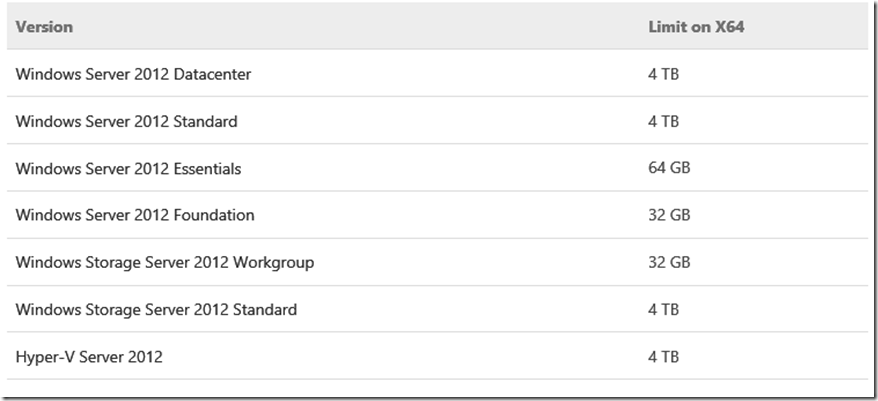Requirements for a fresh Windows Server 2012 Installation (Part 6 of 19)
Windows Server 2012 was made Generally Available (GA) back on September 4th, 2012 and offers a significant and compelling upgrade from previous versions of Windows Server. As customers move toward understanding the significant advantages this release of Windows Server offers, its important to understand what the requirements are for a fresh installation of Windows Server 2012 so this new operating system and its long list of new features can be evaluated.
Download an evaluation copy of Windows Server 2012 here.
The official requirements for installing Windows Server 2012 are as follows:
Processor: Minimum: 1.4 GHz 64-bit Processor
RAM: Minimum: 512 MB
Disk Space: Minimum: 32 GB
Note: Be aware that 32 GB should be considered an absolute minimum value for successful installation. The system partition will need extra space for any of the following circumstances:
- If you install the system over a network.
- Computers with more than 16 GB of RAM will require more disk space for paging, hibernation, and dump files.
Other requirements include:
- DVD Drive
- Super VGA (800x600) or higher resolution monitor
- Keyboard and Microsoft® mouse (or other compatible pointing device)
- Internet Access
While these are mostly the minimum requirements for getting Windows Server 2012 running, most customers will install Windows Server 2012 in much larger configurations. Many customers will virtualize Windows Server 2012 for some workloads and could replicate these minimum requirements to just get Windows Server 2012 running for evaluation purposes, but its nearly impossible to find server hardware with such low hardware requirements as this. Typical Windows Server configurations from what I have witnessed at customer locations have a minimum of 2 GB of RAM with
On the other hand, Windows Server 2012 (available in a number of different editions) scales up to 4 TB of memory in the Enterprise and Standard editions with up to 320 Logical processors. The chart below gives some guidance on memory limits across the various editions of Windows Server.
Also, when trying to understand which version of Windows Server 2012 is right for your business, its important to note that for Windows Server 2012, the primary differences between the Standard and Datacenter editions are virtualization rights. Windows Server 2012 Standard contains virtualization rights to run two operating systems virtually (licensing needs to be purchased separately if applicable) and Windows Server 2012 Datacenter is unlimited.
When you get to the point of actually installing Windows Server 2012, I’d recommend you take a look at the Windows Server 2012 Installation Options post off Microsoft TechNet which can be found here.
Download a Windows Server 2012 evaluation here.
Enjoy!
